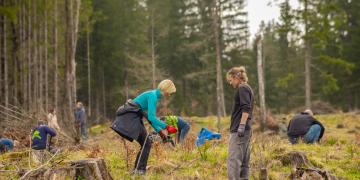Building block 1 – Using an existing initiative (the Olympic Forest) as a blueprint for National Olympic Commit-tees to initiate their own nature restoration projects.
Building block 2 – Establishing principles for admitting National Olympic Committees’ projects to the Olympic Forest network
Building block 3 – Embracing local expertise, governance, and ownership of projects
Building block 4 – Cooperation between NOCs and local nature conservation organisations as a prerequisite for success
